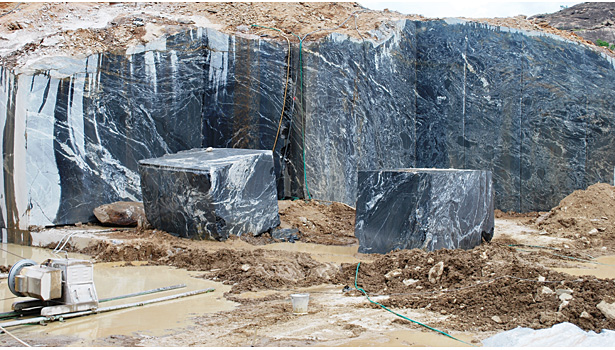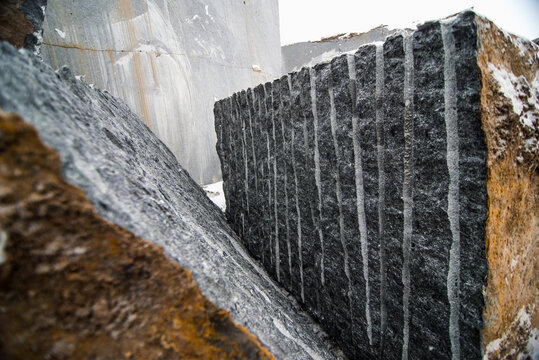Uncovering the Rich History and Lasting Practices of Granite Quarrying
As we depend on the precipice of revealing the intricate tapestry of granite quarrying, a trip through time exposes not just the physical act of removing stone however additionally the social and historical relevance woven into the very material of this practice. From the old origins that laid the foundation for modern quarrying techniques to the lasting techniques that are shaping the future of this market, each sculpt mark on granite surface areas narrates waiting to be unearthed (granite quarries in south africa). The tradition of granite quarrying extends far past simple extraction; it is a testament to human resourcefulness, resilience, and the enduring allure of this impressive stone
Ancient Origins of Granite Quarrying
Going back to ancient worlds, the practice of quarrying granite has actually been an important part of human background and building advancement. The earliest evidence of granite quarrying go back to ancient Egypt, where large pyramids and detailed sculptures were crafted from this long lasting rock. The Egyptians used primitive tools to draw out granite blocks from quarries, showcasing the value of this product in their huge buildings.
Moving ahead in history, the Greeks additionally made considerable contributions to the quarrying of granite. The Greeks utilized granite in numerous building wonders, such as temples and sculptures, showing their skill in shaping and carving this hardy rock. The Romans even more improved the techniques of quarrying granite, using advanced tools like knives and hammers to remove and form granite for their famous frameworks.
Via the centuries, the method of quarrying granite has progressed, with contemporary innovations boosting effectiveness while keeping the ageless charm of this natural stone - granite quarries in south africa. From ancient human beings to modern contractors, the heritage of granite quarrying proceeds to shape our world
Evolution of Quarrying Techniques
The advancement of quarrying techniques has actually been noted by a continual development in the direction of better efficiency and precision in drawing out granite. From the simple approaches used by our ancestors to the sophisticated technologies made use of in contemporary quarrying operations, the sector has actually undergone substantial improvements. Early quarrying strategies included manual work with basic devices such as blades, hammers, and wedges to draw out granite blocks from the planet. As civilizations progressed, techniques like fire-setting and primitive explosives were introduced to help with the extraction procedure.
Innovations in computer-controlled devices and 3D modeling have actually optimized quarrying operations, leading to minimal ecological influence and boosted sustainability methods. As the demand for granite proceeds to rise, the evolution of quarrying techniques continues to be essential to conference market requires successfully and sustainably.
Cultural Significance of Granite
Granite holds a profound social importance across numerous people due to its enduring existence in architectural masterpieces and admired monoliths. The cultural relevance of granite expands beyond its physical qualities; it embodies strength, security, and eternity, making it a symbol of withstanding legacies and practices.

Lasting Practices in Quarrying
In the middle of the abundant background of granite quarrying and its cultural significance exists a growing focus on lasting methods within the market. As environmental awareness and worries concerning resource depletion have increased internationally, the quarrying field has actually significantly embraced lasting methods to decrease its influence on the environment and bordering neighborhoods.

Furthermore, recovery and rehabilitation of quarry websites post-extraction are important to lasting techniques. By restoring quarried locations to a natural or useful state, such as developing wildlife habitats or leisure areas, quarriers can balance out the ecological footprint of their procedures and contribute positively to the neighborhood ecosystem.
Heritage of Granite Quarrying
With a historical backdrop steeped in craftsmanship and industrial progression, what enduring impact has granite quarrying left on the landscape of modern-day culture? The heritage of granite quarrying transcends plain removal practices; it has actually formed architectural marvels, city landscapes, and cultural heritage worldwide. The sturdy nature of granite has actually made it a preferred choice for monuments, buildings, and facilities, standing as a Recommended Reading testimony to the skill and virtuosity of quarry workers throughout generations.
Furthermore, the economic impact of granite quarrying can not be forgotten. The industry continues to give work opportunities and drive local economies in regions where granite removal prevails. It has additionally stimulated technological advancements in quarrying strategies and tools, resulting in a lot more effective and sustainable methods.
In terms of sustainability, the legacy of granite quarrying consists of initiatives to alleviate ecological influences with improvement projects and accountable source monitoring. By stabilizing financial passions with environmental stewardship, the market strives to ensure that future generations can continue to take advantage of this long-lasting all-natural source.
Conclusion
